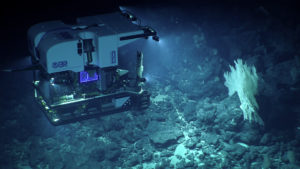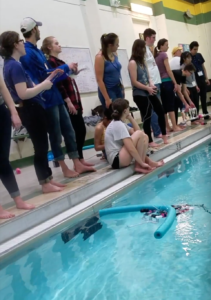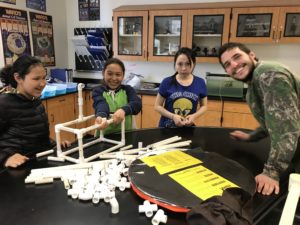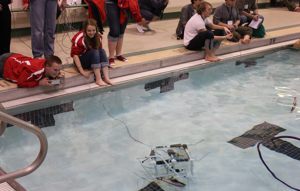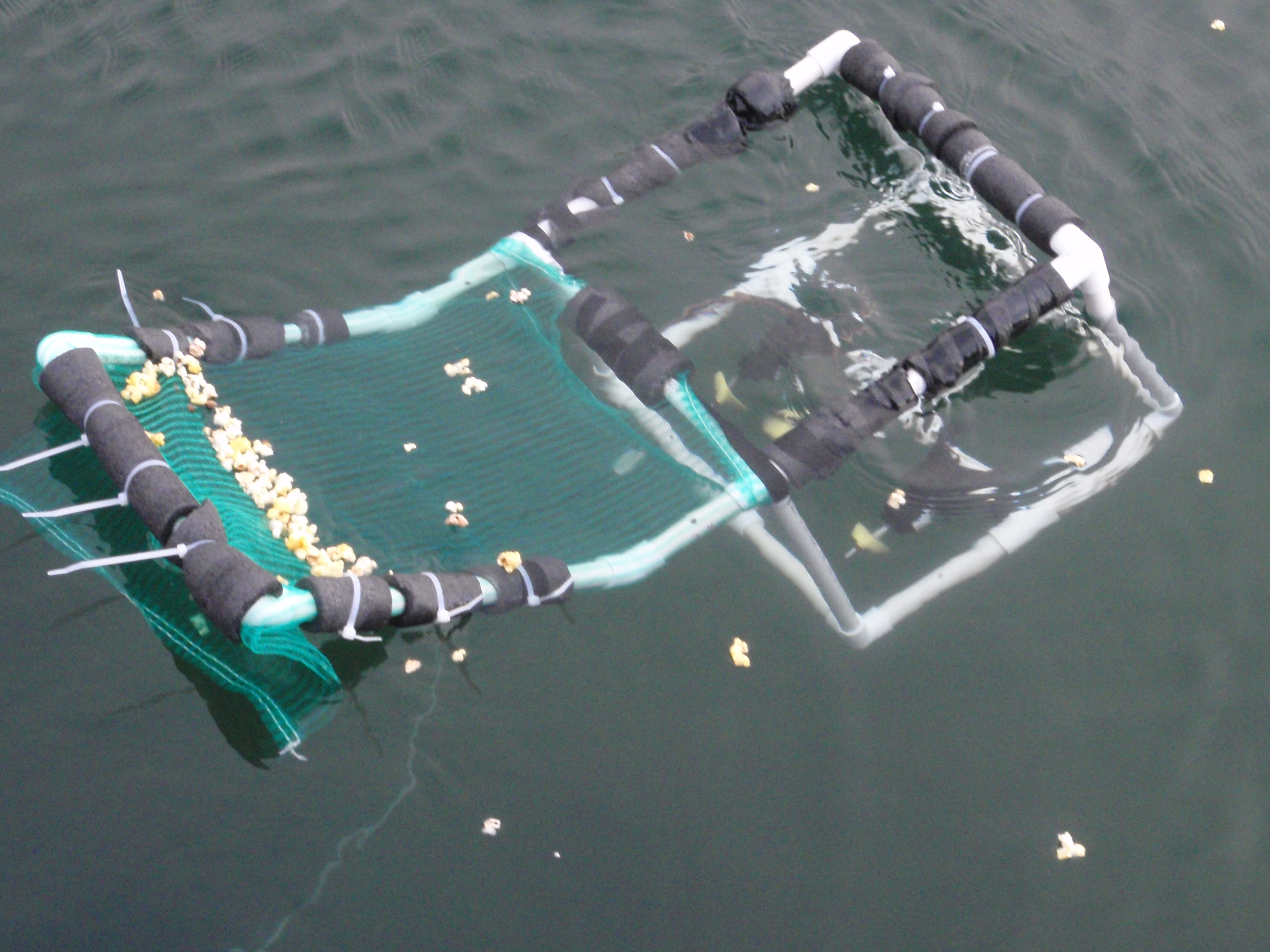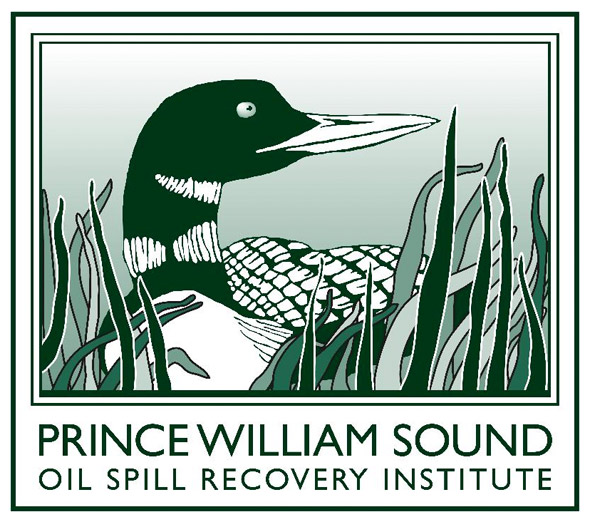Hands on with ROVs
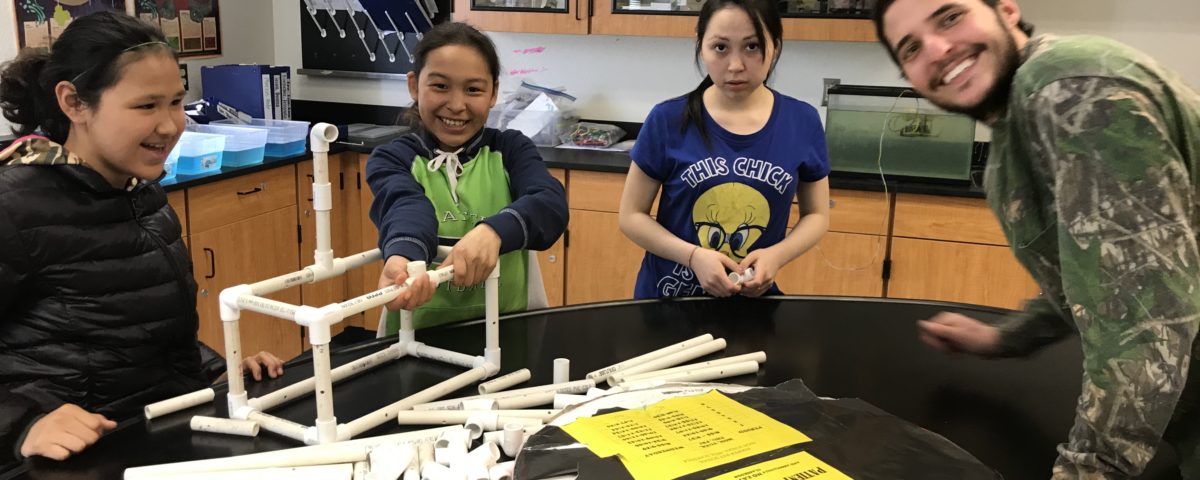
By Kinsey Justa, June 21, 2019
Among the many engaging education programs at PWSSC, perhaps one of the more unique is the hands-on ROV program. An ROV is a Remotely Operated Vehicle that is used for underwater exploration, scientific research, infrastructure work, and much more. This technology is hugely useful in the world of marine science and helps provide scientists with data that would otherwise be difficult to obtain.
PWSSC’s ROV program is funded by the Oil Spill Recovery Institute and exists in three different forms: the Mt. Eccles 6th Grade ROV Challenge, as an elective activity at the annual Alaska Tsunami Ocean Sciences Bowl, and as a traveling outreach program to remote Alaskan communities. The ROV program gives students the opportunity to design and build their own ROV that they can put to the test underwater. “I don’t think you can get better hands-on STEM education than that!” Education Director, Lauren Bien, says of the program.
In Cordova, the 6th grade class learns about the functional design and real-world applications of ROVs before entering into friendly competition between teams of four or five. With their self-built ROVs at the local swimming pool, students are presented with a set of underwater challenges and given the resources to solve it. In order to succeed during the competition, a team must work together to complete a series of tasks. It’s all about teamwork and ingenuity! The Challenge is broken up into five separate tasks for each ROV to complete:
- Can it move from one area to another in the pool?
- Can it hover in order to take an underwater photo?
- Can it maneuver through underwater obstacles?
- Can it attach an anchor chain to an object?
- Can it respond to a small simulated oil spill?
Underwater obstacles are simulated with hula hoops, buckets, and PVC structures while the oil spill is simulated with black ping pong balls. Each group is judged on their ability to complete the above tasks with their ROV. Teams can also earn points for being positive and well organized.
The ROV competition is certainly a highlight of the 6th grade spring science curriculum and teaches important lessons about how proper planning and understanding of underwater technology like ROVs can assist in research and recovery. Lauren is adamant that the results of the program are impressive, “I’ve been running the challenge for years and I’m continually amazed by the designs these kids come up with.”
Students outside of Cordova also participate in our ROV programs. This past year, Lauren Bien and AmeriCorps member, Chris Iannazzoni, traveled to Scammon Bay and Hooper Bay to present the ROV Challenge to the junior and senior high school students. Not every community has an indoor pool to host such an activity, but fortunately a small inflatable kiddie pool did the trick for these traveling programs in the classroom! The education team provided 175 students with the ROV experience and taught them about the possibilities of this technology. “It was a full four days,” Chris admits, “but very rewarding.” This program offers a unique chance for hands-on science literacy in off-the-road communities that may not otherwise have many visiting science educators.
Finally, the ROVs make one important stop in Seward each February at the Alaska Tsunami Ocean Sciences Bowl. This annual science competition, the regional event of the National Ocean Sciences Bowl, invites high school students from around the state of Alaska to present research papers and compete in a buzzer-style quiz bowl. PWSSC coaches the Cordova team and they also bring the ROVs to offer as an elective activity for all the participants to enjoy during their free time between competition rounds. This age group particularly understands the real-world uses of ROVs and their ability to aid in oil spill recovery in places where it is dangerous to send a human responder, such as the recent Deep Water Horizon spill. Many of the participants in the Alaska Tsunami Bowl are interested in pursuing careers in STEM and marine science, and this environment of friendly competition offers an enjoyable challenge.
Overall the ROV program at the Prince William Sound Science Center is a stimulating and future-forward focus for the education team, whether close at home in the communities of Cordova and Seward or farther afield in rural Alaska. The Science Center is committed to helping encourage the next generation of marine scientists and fostering scientific literacy amongst students of all ages. With creative simulations and challenging competitions, the education department has certainly discovered an exciting way to accomplish these goals within our region.


